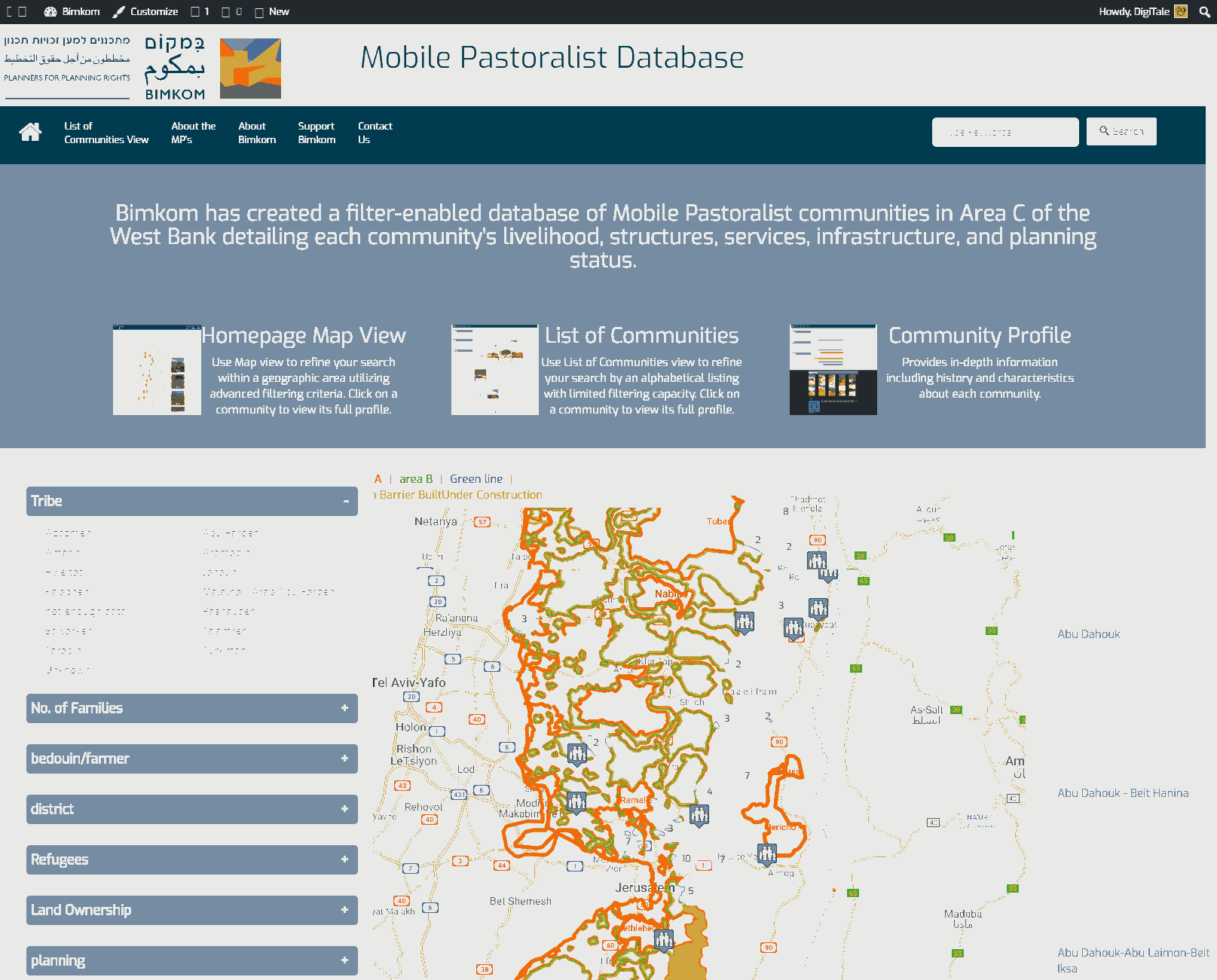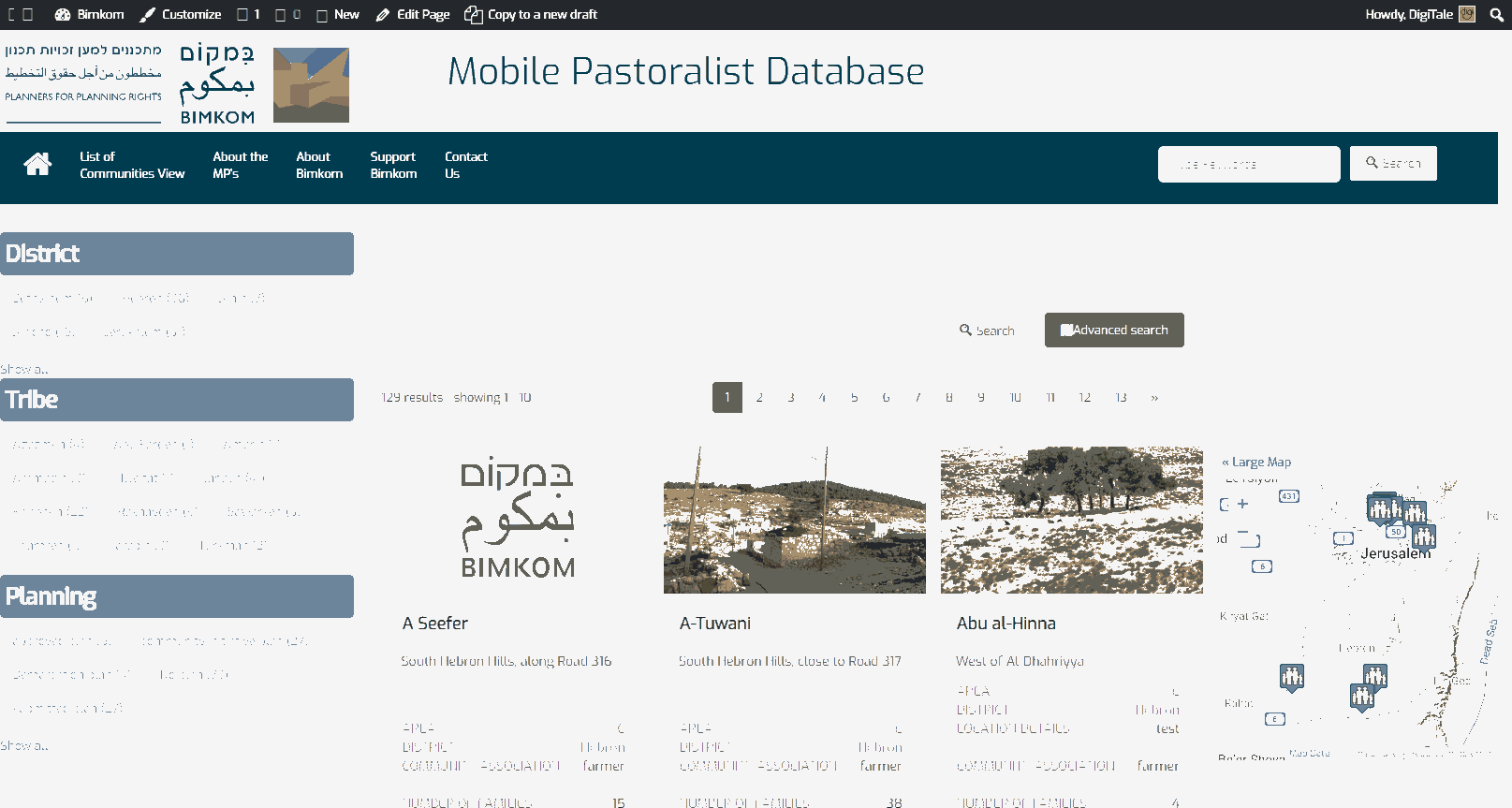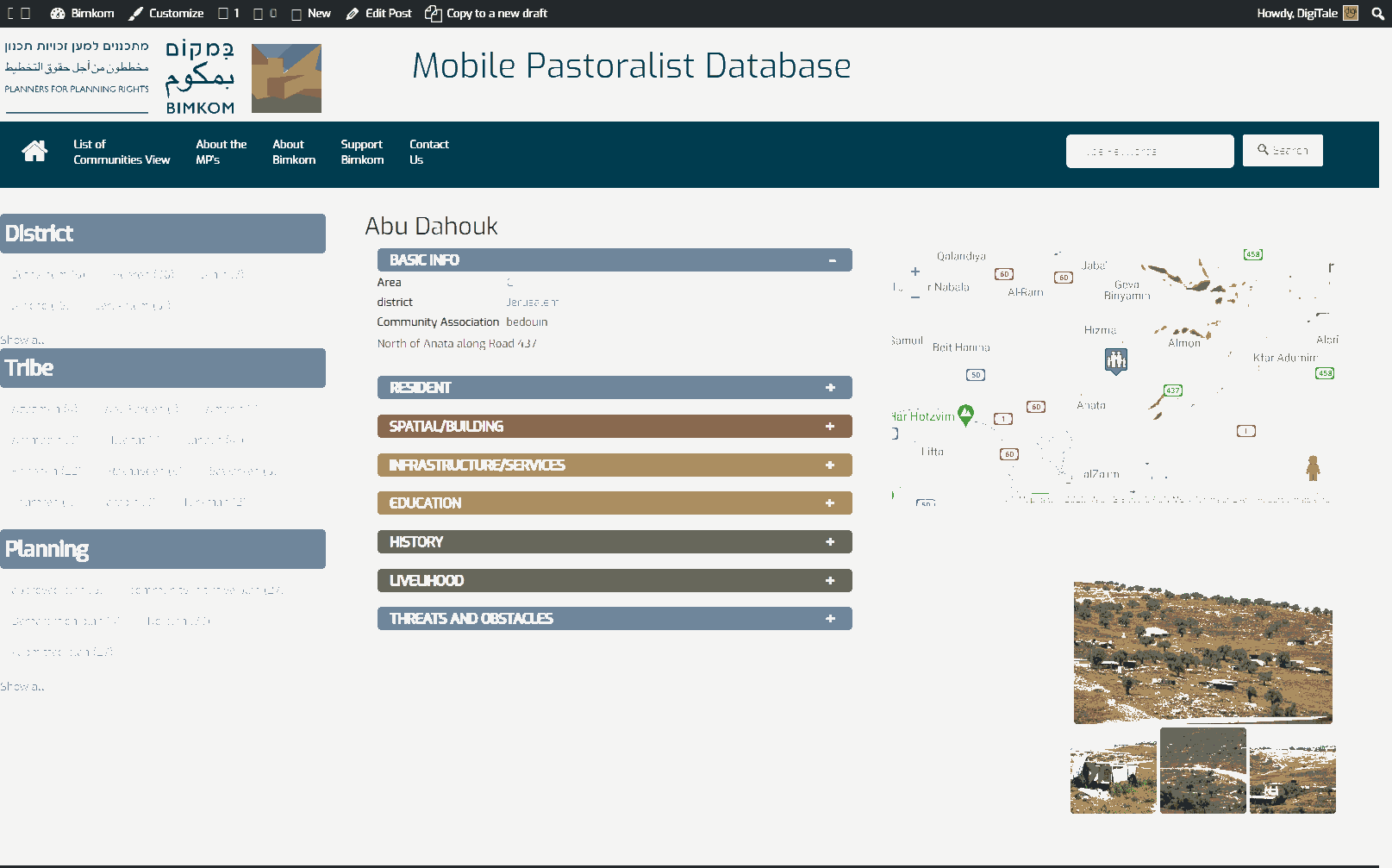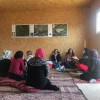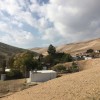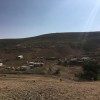Jerusalem periphery, in a valley south east to Ma'aleh Adumim, north east to Kedar settlement.
Wadi Abu Hindi
Resident
Number of Families
40
Tribe
testing the tooltip
Jahalin
Sub-Tribe
Saray'a
Names of Families
Hammadin, Hathalin
Refugees
official refugee status
Spatial/Building
Land Ownership
- private
- lease
- requisition
Land Ownership - details
The lands are owned by residents of Abu Dis, but part of them are confiscated by Israel.
Planning
- submitted plan
- community initiative plan
Planning - details
A plan was prepared with the community and submitted to the ICA, which refused it but offered a smaller version of one alternative, yet the negotiations led nowhere.
Structure Type
- tent
- tin shack
- EU shack
- wood
Infrastructure/Services
Access to Community
4X4 vehicle
Access to Community - details
A 4-kilometers dirt road leads to the vally. When done by private vehicle it can cause damage to it, particularly in the winter, when floods fill the road, making it impossible to go in and out.
Water Access
connection to neighboring village
Water Access - details
Connected to Abu Dis since 2012, through a project by the ACF
Electric Connection
Electric Connection - details
New solar panels were established in 2019, as the old ones were barely functioning.
Health Care
- mobile clinic in community
- clinic in neighboring community
- clinic in distant town/village
Health Care - details
Clinics in Al-Eizaryia and Abu Dis. For more difficult cases, they use hospitals in Ramallah and Jericho.
A mobile clinic of UNRWA used to pay the community a visit twice a month, but it has stopped recently.
They have health insurance from the PA.
A mobile clinic of UNRWA used to pay the community a visit twice a month, but it has stopped recently.
They have health insurance from the PA.
Location of Services
Al-Eizariya, Abu-Dis
Education
Kindergarten
yes
Kindergarten - details
Run by two women from the community. Lacks basic needs for children.
Location of School #1
Wadi Abu Hindi
general description [school #1]
- Boys
- Girls
- Primary school
- Middle school
Distances to schools [school #1]
0-300 meter
Location of School #2
Sawahre A-Sharqiyya
Time to schools [school #1]
5 - 15 minutes
general description [school #2]
- Girls
- High School
Time to schools [school #2]
over 1 hour
Distances to schools [school #2]
2001 - 5000 meters
Location of School #3
Sawahre A-Sharqiyya
general description [school #3]
- Boys
- High School
Distances to schools [school #3]
2001 - 5000 meters
Location of School #4
Al-Eizariya
Time to schools [school #3]
over 1 hour
general description [school #4]
- Boys
- High School
Distances to schools [school #4]
more than 5001 meters
Location of School #5
Abu-Dis
Time to schools [school #4]
over 1 hour
general description [school #5]
- Girls
- High School
Distances to schools [school #5]
more than 5001 meters
Time to schools [school #5]
over 1 hour
Schools - details
Local school (elementary and intermediate) serves 140 children from the communiy and from Al-Muntar (nearby community).
Many of the boys drop out of high school in order to find a job.
Those who continue, find it hard to reach school, and they are mostly late to classes, specially in winter which makes the walk muddy and wet. These same conditions also make it hard for teachers to reach the schools.
Many of the boys drop out of high school in order to find a job.
Those who continue, find it hard to reach school, and they are mostly late to classes, specially in winter which makes the walk muddy and wet. These same conditions also make it hard for teachers to reach the schools.
Travel to school [school #1]
easy walk
Travel to school [school #2]
- difficult walk
- donkey
Travel to school [school #3]
- bus
- difficult walk
- donkey
Travel to school [school #4]
- bus
- difficult walk
Travel to school [school #5]
- bus
- difficult walk
Accessibility to school [school #1]
1
Accessibility to school [school #2]
7
Accessibility to school [school #3]
7
Accessibility to school [school #4]
7
Accessibility to school [school #5]
7
Accessibility to school - STAFF [school #1]
7
Accessibility to school - STAFF [school #2]
2
Accessibility to school - STAFF [school #3]
2
Accessibility to school - STAFF [school #4]
2
Accessibility to school - STAFF [school #5]
2
History
History
Originally from Tel-Arad in the Negev. They were expelled in 1948 and reached this area in the 50's after passing by Hebron.
livelihood
Seasonal Movement
no
Seasonal Movement - details
In the past they used to go to their seaonal grazing area (Izbeh) for about 3 months each year. Since the grazing areas to the east of the community were declared a closed military zone they no longer go to Izbeh.
Community Initiatives
woman employment
Initiative in the community - details
Recently one woman have opened a small grocery shop for basic needs.
Two women are qualified beauticians and are trying to open a beauty salon soon.
Two women are qualified beauticians and are trying to open a beauty salon soon.
Other Occupation
- shepherding
- herd without shepherding
- temporary employment in settlement
- daily laborer
- unemployed
Main Occupation
- shepherding
- herd without shepherding
- daily laborer
Woman's Occupation
- taking care of the herd
- taking care of the kids
- housekeeping
- teachers/kindergarten teachers
General Livelihood - details
The size of the herds has dropped significantly in the last couple of decades as grazing areas become limited, and today they own between 3000-4000 sheep and goats. Some herders used to grow wheat and barley which were used to feed the sheep, but they are forbidden from using their agricultural lands by the ICA.
The women used to work in yarn making and embroidery, but they have stopped as they cannot afford the costs anymore.
Two local women work as teachers in the kindergarten. Some are unemployed.
The women used to work in yarn making and embroidery, but they have stopped as they cannot afford the costs anymore.
Two local women work as teachers in the kindergarten. Some are unemployed.
Threats and obstacles
Threats and Obstacles
fjfxjsfjsyjsyj
- firing zone/closed military zone
- close to settlement
- road
- Dump site
Threats and Obstacles - details
The nearby Abu-Dis dumpsite is still functioning and its liquids are drained into a pool adjacent to the dirt road leading to the community.
Number of Demolition Orders
34
Number of Demolitions
0
Demolitions - date of update
September 17, 2010
Demolitions - details
According to the residents, all the structures in the community including the school were demolished in 1997 but have been rebuilt by the community soon after. Since 2011 2 orders were implemented causing the demolition of 6 structures.
In 2017, 2 houses were demolished after being replaced by EU Caravans, although they had no previous demolition order. They received permission to re-rebuilt them from the previous materials, which they did.
In 2017, 2 houses were demolished after being replaced by EU Caravans, although they had no previous demolition order. They received permission to re-rebuilt them from the previous materials, which they did.

